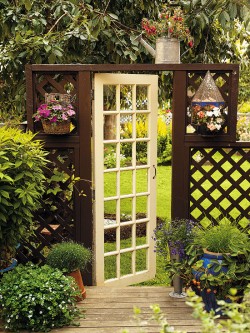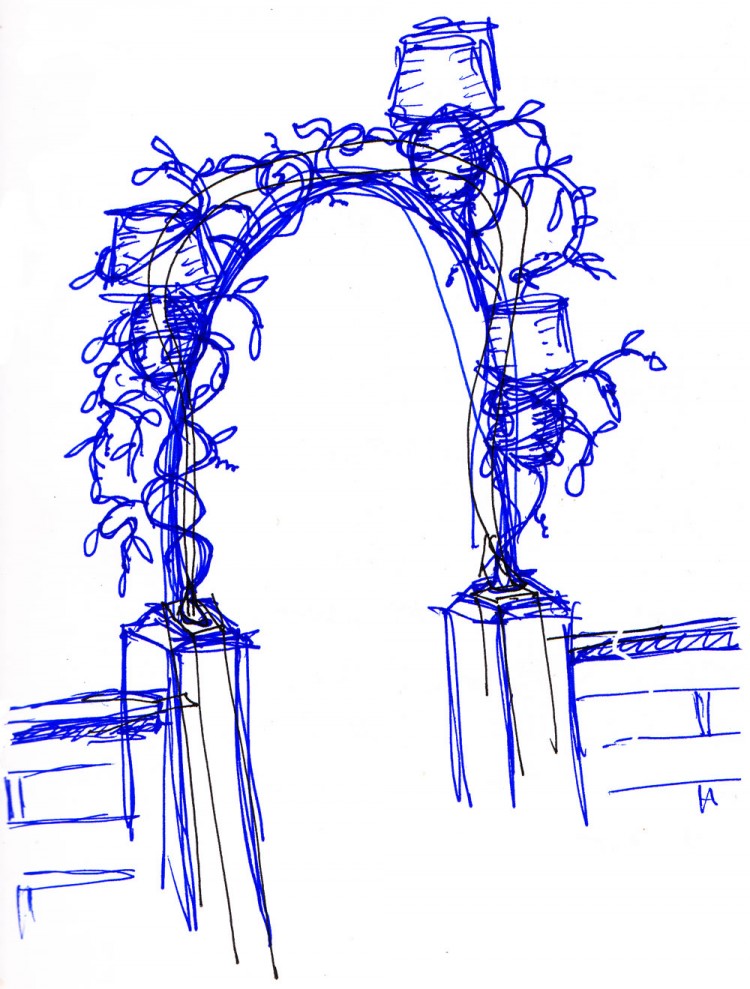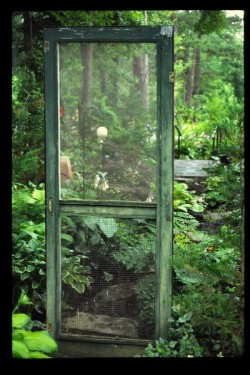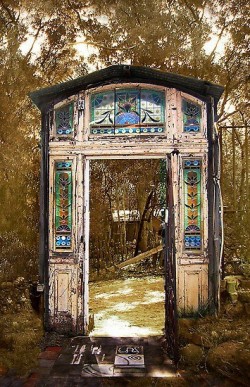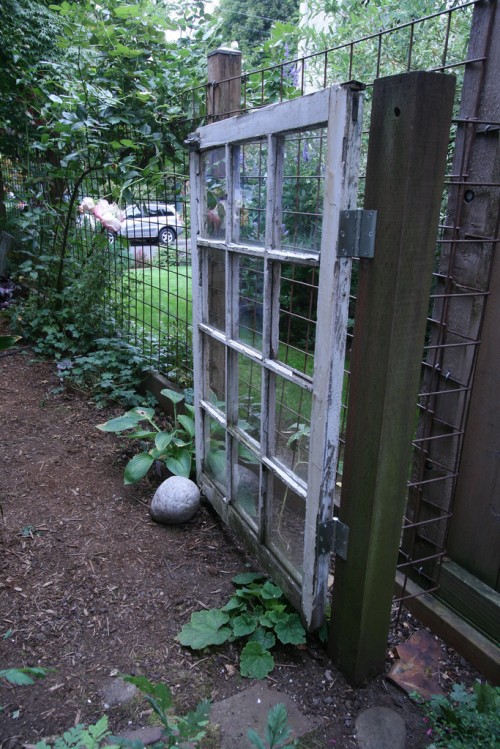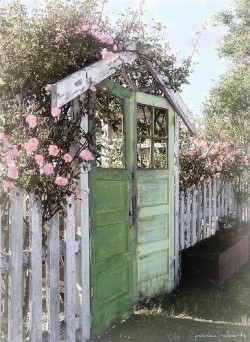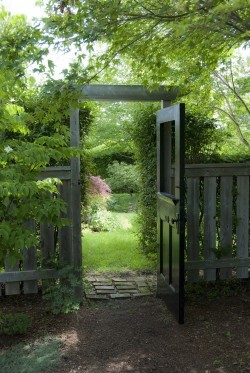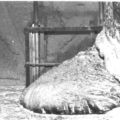I’m participating in Fun-a-Day, a daily art challenge through the month of January, committed to do a daily post here detailing some Big Art Idea or project that looms somewhere out in my future.
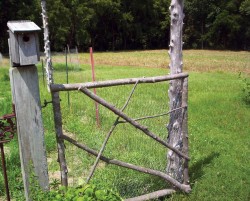
I love gates. And trellises and porches and stoops and steps and other architectural transition elements. One of my favorite books by one of my favorite thinkers talks about these kinds of transitions, Christopher Alexander in A Pattern Language: A Timeless Way of Building:
Buildings, and especially houses, with a graceful transition between the street and the inside, are more tranquil than those which open directly off the street.
The experience of entering a building influences the way you feel inside the building. If the transition is too abrupt there is no feeling of arrival, and the inside of the building fails to be an inner sanctum…
Make a transition space between the street and the front door. Bring the path which connects street and entrance through this transition space, and mark it with a change of light, a change of sound, a change of direction, a change of surface, a change of level, perhaps by gateways which make a change of enclosure, and above all with a change of view.
When we put in the posts for the lower gate at the Redwood House, I wanted to design a transitional arch that would be both beautiful and unique.
Alexander talks about how this transition pattern might be implemented:
It is possible to make the transition itself in many different physical ways. In some cases, for example, it may be just inside the front door – a kind of entry court, leading to another door or opening that is more definitely inside. In another case, the transition may be formed by a bend in the path that takes you through a gate and brushes past the fuchsia on the way to the door. Or again, you might create a transition by changing the texture of the path, so that you step off the sidewalk onto a gravel path and then up a step or two and under a trellis.
In all these cases, what matters most is that the transition exists, as an actual physical place, between the outside and the inside, and that the view, and sounds, and light, and surface which you walk on change as you pass through this place. It is the physical changes – and above all the change of view – which creates the psychological transition in your mind.
Alan Watts talks about a gate in a little out-of-the-way garden in Kyoto beyond which a path lead into the mountains. He always wanted to see what was beyond the gate, but never got back to it. He uses this to introduce the Japanese aesthetic concept of wabi-sabi, an idea that touches on the sadness and acceptance of the impermanence of all things (though that is putting it a little too simply).
For one of the two gates to the Redwood House, I wanted to have something with a touch of the natural and the touch of the whimsical. I wanted a simple metal arch entwined with ropey copper vines and leaves. I had this beautiful plain but iconic lamp (broken now, sadly) that inspired the lamps intertwined in the vines of the gate. The copper parts would be allowed to oxidize and turn green and the steel parts to rust and turn brown and red.
